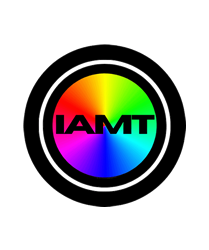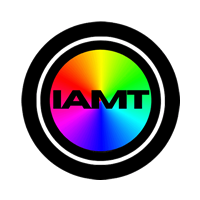Policy Statement
Training and Professional Development
Background
Industry participants such as Med-Hot Imaging Services (“Med-Hot”) provide an Introductory Training Course.
The Training Course offered by Med-Hot has been designed in consultation with the IAMT. This course:
- covers the basic technical requirements for a thermographer to successfully become a professional thermographer (general knowledge, imaging skills, and business skills).
- provides training on a specific imaging software--in this case, Med-Hot’s patented TotalVision software.
- provides participants with a certificate that attests to the participant’s successful completion of training.
Industry participants are urged to consult with the IAMT to have their own Training Course reviewed and registered with the IAMT.
IAMT is in a position to develop a clinical thermography curriculum.
This course sets out a professional and educational path and describes the associated learning process.
To ensure that the client receives a meaningful report, the thermographer must:
- provide quality images. The quality of the images is essential in providing the interpreter with the opportunity to generate the best possible report.
- lead clients through the imaging process, including following pre-imaging instructions, filling out questionnaires and consent forms, and adhere to proper imaging protocols and techniques.
In addition, both thermographers and interpreters should understand their scope of practice and contribute to raising the overall standards of clinical thermography.
IAMT Clinical Thermography Curriculum
The primary aim of the IAMT’s Training and Professional Development Program is to encourage thermographers to invest in their technical and business expertise and to contribute to raising the practice standards of clinical thermography. There are two components: (i) Certification; and (ii) Continuing Education and Work Experience.
1 - Certification
IAMT, on the basis of a certificate of completion issued by industry participants: confirms that the Thermographer has completed the required Technical Training component and provides the Thermographer with a certificate as Associate Clinical Thermographer (ACT).
- At this stage, you have the required functional competencies to lead clients through the process of completing a thermography study (including explaining the pre-imaging instructions and imaging protocols, preparing a medical history and taking and storing the required set of images to be submitted for the preparation of a thermography report). You also have a good understanding of infrared imaging, the role of thermography in healthcare, and the business and marketing aspects of operating a clinical thermography practice.
IAMT, on the basis of an initial volume of practical experience: provides the Thermographer with a certificate as Certified Clinical Thermographer (CCT). Upgrading to CCT requires the completion of 30 studies (including at least 10 full-body studies). This will require confirmation by a letter of attestation from the reporting service (ex. Physicians Insight, Electronic Medical Interpretation or BTIScan) used by the Thermographer.
- At this stage, you have an advanced understanding of the technical competencies and business skills required to manage a clinical thermography practice.
Annual registration is also required, including payment of membership dues (currently set at $99 per year).
2 - CEWE Program: Continuing Education
Continuing Education is ongoing learning, through both internal and external courses, webinars and structured discussions, that allows thermography professionals to keep their knowledge and skills current and relevant in today’s rapidly evolving work world.
IAMT’s CEWE Program provides a framework for certified members to guide their professional development choices. The Program requires IAMT certified members to complete a minimum amount of 9 hours of professional development on a one-year compliance cycle in order to maintain their designation current. Professional development activities that count towards this minimum amount are divided into four categories.
CEWE activities that count towards the minimum requirement are divided into four categories:
- Contributions to the Profession: activities such as publishing a case study or article (= 6 credit hours for every case study); or designing or teaching a training or mentoring program related to clinical thermography (= 6 credit hours for every program).
-
Peer and Professional Interaction: participation in IAMT online webinars (= 3 credit hours for every 3 online seminars registered and attended); subscribing to a discipline-related journal and writing a summary of its relevance to clinical thermography (= 3 credit hours for every written summary).
-
Contributions to Technical Knowledge: formal course from an educational institution or recognized training provider (for example, FLIR’s Infrared Training Center) and writing a summary of its relevance to clinical thermography (= 6 credit hours for every course).
- Management/Leadership Training: leading one IAMT webinar or group discussion that is approved by the IAMT (= 6 credit hours); or membership in an active IAMT committee for a period of no less than 12 months (=6 credit hours).
Note that CEWE completed over and above the cycle requirements will not be carried over into the next 2-year compliance cycle; CEWE must be an on-going commitment throughout your career.
3 - CEWE Program: Work Experience
Work Experience ensures that you keep your technical skills current and continue to develop as a clinical thermographer. In order to meet the work experience requirement, you must complete a minimum of 25 imaging studies (of which, at least, 6 must be full-body studies, or upper body studies) over each one-year compliance cycle.
4 - CEWE Compliance
Participation in the IAMT CEWE Program is required for all certified members (ACT and CCT).
If you are required to comply with the CEWE Program, you must complete annual compliance forms. You will receive a notification from the IAMT by the end of November of each 1-year cycle that your compliance form is due by the end of the calendar year. The compliance form can be downloaded from the website.
You must provide documentation from your CEWE activities to confirm completion, for example: confirmation/certificate of completion or attendance, receipt of payment with a course outline or a letter from a training provider, or the summary note required for some activities.
Your annual compliance form will be reviewed and designated for approval or follow-up by the CEWE Committee of the IAMT. The Board of Directors will review the Compliance Report of the CEWE Committee, normally at their April meeting.
If you lose your registration as CCT due to non-compliance with the CEWE requirements, you can request to be reinstated after submitting proof of compliance. Once your CEWE compliance has been verified, the CEWE Committee will submit a request for reinstatement to the Board of Directors, on your behalf. The reinstatement fee, currently set at $99, will be waived if you return to membership compliance within one year after losing your registration as CCT for CEWE non-compliance. Exceptions will be considered for extenuating circumstances like parental or medical leave.
Executive Note: This policy statement was approved by the Board of IAMT at a meeting of February 21, 2023.

